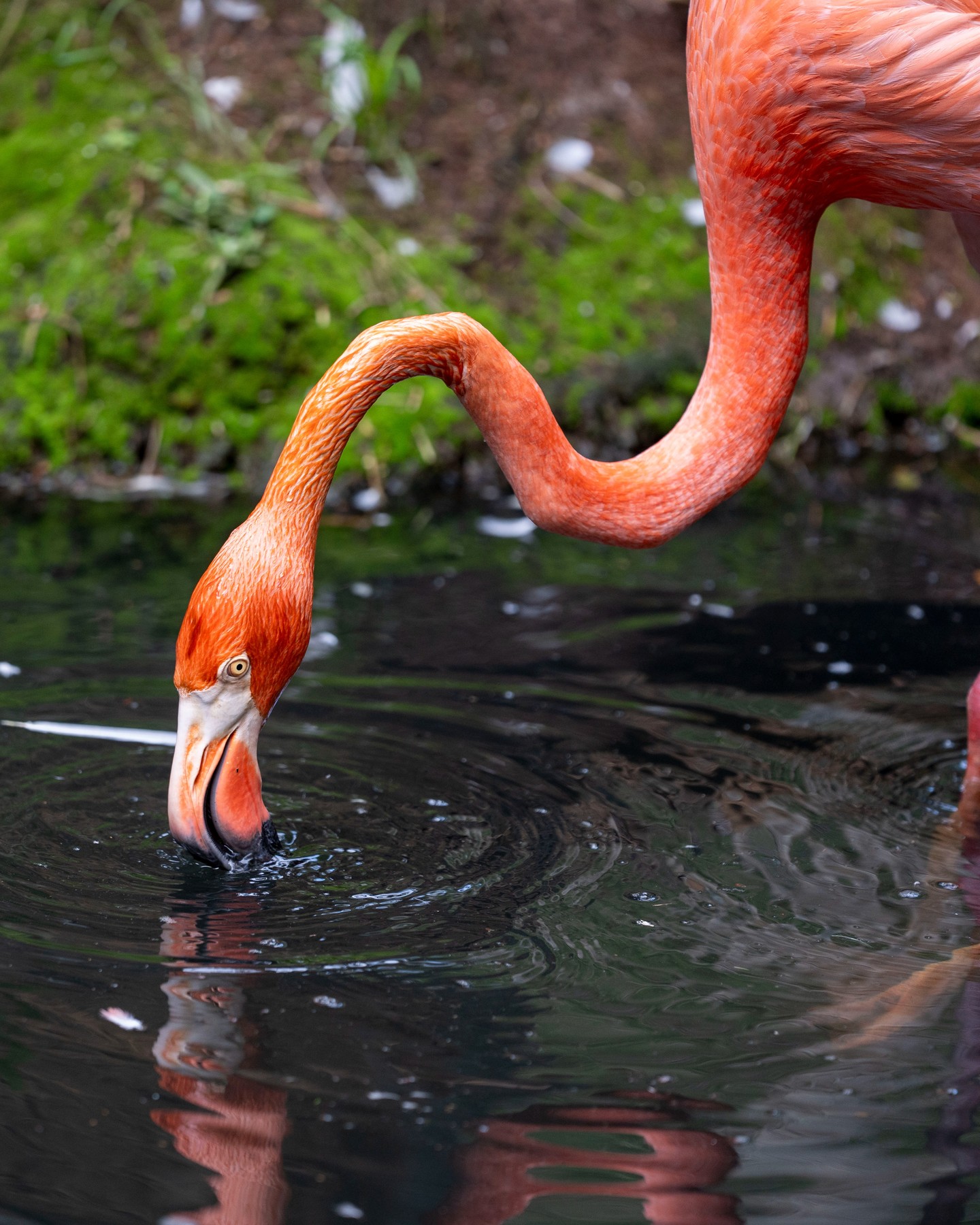- The resilience of flamingos and their adaptation to storms.
- The phenomenon of the 2023 Hurricane Idalia transporting flamingos.
- The current status of the American Flamingo population in Florida.
- The importance of conservation efforts to protect flamingo habitats.
- The role of zoos in wildlife conservation and environmental education.
Happy Saturday! We are open rain or shine. Have you ever wondered who loves a good storm? Interestingly, flamingos do. The resilience of these vibrant birds is fascinating, especially given their surprising adaptability to severe weather conditions. One notable event that highlighted this was Hurricane Idalia in 2023, which inadvertently transported a flock of flamingos to the shores of the United States. Approximately 100 flamingos found themselves in Florida, sparking interest and awe among wildlife enthusiasts and conservationists alike.
The flamingos being relocated by storms is not entirely new, but the scale at which Hurricane Idalia delivered these birds to Florida was remarkable. Flamingos are known for their incredible endurance and ability to travel long distances, but a hurricane-assisted journey brought a unique twist to their migratory patterns. These flamingos, typically native to the Caribbean and parts of South America, were suddenly thrust into a new environment, and it was uncertain whether they would stay.
Recent observations and surveys provide promising news. The American Flamingo survey conducted in February counted 101 wild American flamingos, indicating that these majestic birds have decided to make Florida their home. This newfound population presents an exciting opportunity for scientists to study flamingo behavior in a different context and to understand how these birds adapt to new environments. The presence of flamingos in Florida can also serve as an indicator of the health of local ecosystems.
For flamingos to thrive in Florida, protecting and nourishing their wildlife areas is crucial. Preservation of their habitats from human disturbance is paramount. Flamingos rely on specific environmental conditions to thrive, including access to clean waterways and the presence of native vegetation. Human activities such as construction, pollution, and recreational use of natural spaces can disrupt these critical habitats. Conservation efforts must minimize these disturbances to ensure a safe and suitable environment for flamingos and other wildlife.
The Zoo’s conservation work plays an essential role in protecting flamingo habitats. Efforts include promoting the growth of native vegetation, which provides flamingos with necessary food sources and nesting materials. Maintaining clean waterways is also crucial, as flamingos feed on small organisms found in shallow waters. Pollution and habitat degradation can severely impact the availability of these food sources, making conservation actions to keep these habitats pristine vital.
Zoos’ role extends beyond protecting habitats. They are instrumental in wildlife conservation and environmental education. They serve as living classrooms, offering the public a chance to learn about various species, their behaviors, and the importance of biodiversity. By engaging with visitors, zoos can foster a deeper understanding of wildlife conservation and inspire action to protect natural habitats. They also participate in breeding programs and research initiatives contributing to the overall knowledge and preservation of endangered species.
Additionally, modern zoos are involved in scientific research that can aid conservation efforts. Studying flamingos in a controlled environment allows scientists to gather data on their dietary needs, reproductive behaviors, and social structures. This information is invaluable when developing strategies to support wild populations. For instance, understanding the specific nutritional requirements of flamingos can help restore habitats to ensure they have access to necessary food resources.
Environmental education programs in zoos can also teach visitors about the impacts of climate change and human activities on wildlife. By highlighting events like the 2023 Hurricane Idalia and its effect on flamingos, zoos can illustrate the interconnectedness of natural phenomena and animal behavior. These educational initiatives empower individuals to make informed decisions in their daily lives that contribute to conservation efforts, such as reducing waste, supporting sustainable practices, and advocating for policies that protect the environment.
In conclusion, the resilience and adaptability of flamingos are truly remarkable, especially when faced with natural disasters like hurricanes. The unexpected arrival of flamingos in Florida after Hurricane Idalia in 2023 shed light on these birds’ astonishing endurance and adaptability. The current presence of American flamingos in Florida provides both an opportunity for scientific study and a call to action for conservationists. Protecting and nourishing their habitats is essential for their continued survival. Zoos play a vital role in these efforts, preserving natural environments, conducting important research, and educating the public about the importance of wildlife conservation. By supporting these efforts, we can help ensure that flamingos and other wildlife continue to thrive in a world that is increasingly impacted by human activities.
Happy Saturday! Whether rain or shine, let’s celebrate nature’s incredible resilience and our role in safeguarding it for future generations.
*****
Source Description
Happy Saturday! We are open rain or shine.
Do you know who loves a good storm?
A flock of flamingos was caught up in Hurricane Idalia in 2023, which delivered them to the shores of the United States. About 100 flamingos landed in Florida. Until recently, it was unclear whether they would remain here. The American Flamingo survey undertaken in February of this year counted 101 wild American flamingos, confirming that these majestic birds have indeed made Florida their home.
It is our hope that flamingos will thrive in Florida and that their population grows over the years to come. For this to happen, we must protect and nourish Florida’s wildlife areas, which is where the Zoo’s conservation work is most important. We must preserve flamingo habitats from human disturbance, promote native vegetation growth and keep our waterways clean.


